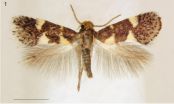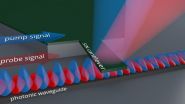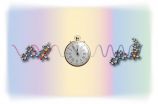Birth weight affected by warm temperatures during pregnancy
Study conducted by researchers at Ben-Gurion University of the Negev and Harvard
2015-06-09
(Press-News.org) BOSTON... June 9, 2015 - Ben-Gurion University of the Negev (BGU) and Harvard University researchers have developed a technique that measures the correlation between air temperature and birth weight. They evaluated the relationship between birth outcomes (focusing on birth weight) and ambient air temperature during pregnancy in Massachusetts between 2000 and 2008.
"We found that exposure to high air temperature during pregnancy increases the risk of lower birth weight and can cause preterm birth," according to Dr. Itai Kloog, a senior lecturer in BGU's Department of Geography and Environmental Development. "An increase of 8.5 °C in the last trimester of average exposure was associated with a 17g decrease in birth weight of babies born full term after adjusting for other potential risk factors."
The paper, "Using Satellite-Based Spatiotemporal Resolved Air Temperature Exposure to Study the Association between Ambient Air Temperature and Birth Outcomes in Massachusetts" was recently published in the Environmental Health Perspectives journal.
Together with his colleagues, Dr. Kloog developed a "high resolution air temperature estimation model" to predict daily air temperature by kilometer and address level exposure during various prenatal exposure periods from date of conception through birth for each mother.
"With the increase in temperatures over the last century and continued emissions from greenhouse gases, more attention is being focused on effects from heat," Kloog says.
INFORMATION:
The researchers from Harvard University include, Steven J. Melly, Prof. Brent A. Coull, Dr. Francesco Nordio, and Prof. Joel D. Schwartz.
This study was funded by the Harvard EPA PM Clean Air Research Center
(CLARC) (R- 834798), NIEHS ES000002, and the following R21 climate grants ES020695 and AG040027.
American Associates, Ben-Gurion University of the Negev (AABGU) plays a vital role in sustaining David Ben-Gurion's vision, creating a world-class institution of education and research in the Israeli desert, nurturing the Negev community and sharing the University's expertise locally and around the globe. With some 20,000 students on campuses in Beer-Sheva, Sede Boqer and Eilat in Israel's southern desert, BGU is a university with a conscience, where the highest academic standards are integrated with community involvement, committed to sustainable development of the Negev. AABGU is headquartered in Manhattan and has nine regional offices throughout the United States, including Boston. For more information, e-mail newengland@aabgu.org, call 800-962-2248, or visit http://www.aabgu.org END
ELSE PRESS RELEASES FROM THIS DATE:
2015-06-09
Since 2011 an unknown leafmining moth was observed in table grape orchards and often in large numbers in the Paarl region of the Western Cape (South Africa).
Although the effect of the leafmines on the grape vine itself appears to be limited, collateral damage may be more serious, especially when larvae descend from the vine canopy to form a dense curtain of suspended larvae. A new study published in ZooKeys looks into the morphology and biology of the potential pest.
Although the leafminer had been seen before in South Africa, it proved impossible to find its name.
Entomologist ...
2015-06-09
A team of Tel Aviv University and UCLA astronomers have discovered a remarkable cluster of more than a million young stars are forming in a hot, dusty cloud of molecular gases in a tiny galaxy very near our own.
The star cluster is buried within a massive gas cloud dubbed "Cloud D" in the NGC 5253 dwarf galaxy, and, although it's a billion times brighter than our sun, is barely visible, hidden by its own hot gases and dust. The star cluster contains more than 7,000 massive "O" stars: the most brilliant stars extant, each a million times more luminous than our sun.
"Cloud ...
2015-06-09
Simon Fraser University PhD graduate Maryam Sadeghi will unveil MoleScope™, an innovative hand-held tool that uses a smartphone to monitor skin for signs of cancer, at the World Congress of Dermatology conference in Vancouver June 9-13.
Sadeghi has spent three years transitioning from academic research to her start-up venture, MetaOptima Technology Inc. MoleScope™, the company's inaugural product, which enables people to monitor their moles and skin health, share images with family and healthcare providers and eventually, connect skin specialists with people ...
2015-06-09
Two young researchers working at the MIPT Laboratory of Nanooptics and Plasmonics, Dmitry Fedyanin and Yury Stebunov, have developed an ultracompact highly sensitive nanomechanical sensor for analyzing the chemical composition of substances and detecting biological objects, such as viral disease markers, which appear when the immune system responds to incurable or hard-to-cure diseases, including HIV, hepatitis, herpes, and many others. The sensor will enable doctors to identify tumor markers, whose presence in the body signals the emergence and growth of cancerous tumors.
The ...
2015-06-09
Two years ago, the Immunology of Diabetes Research Group at the Germans Trias Research Institute (at Universitat Autònoma de Barcelona - Campus of International Excellence Sphere) reported a new experimental immunotherapy that prevented the onset of Type 1 Diabetes in mice predisposed to the disease. This work led to more studies with the support of the Spanish Government, Catalan Government and private patrons with a keen interest in it. Thanks to this, the article published today in PLOS ONE describes a new step towards the creation of a vaccine, which in the medium-term ...
2015-06-09
June 9, 2015 - New approaches, based on body mass index (BMI) or other simple measures, are needed to improve assessment of obesity in adolescents with physical disabilities, reports a paper in the American Journal of Physical Medicine & Rehabilitation, the official journal of the Association of Academic Physiatrists. The journal is published by Wolters Kluwer.
Obesity is a major problem in children and adolescents with mobility limitations, but standard assessments tend to underestimate it, according to the new research by Brooks C. Wingo, PhD, of University of Alabama ...
2015-06-09
Nagoya, Japan - A team of chemists and biologists at the Institute of Transformative Bio-Molecules (ITbM), Nagoya University have succeeded in finding new molecules that change the circadian rhythm in mammals by applying synthetic chemistry methods, which makes use of highly selective metal catalysts.
Most living organisms have a biological clock with an approximately 24-hour circadian rhythm, which regulates important body functions such as sleep/wake cycles, hormone secretion, and metabolism. Disruption of the circadian rhythm by genetic mutations and environmental ...
2015-06-09
LOS ANGELES (JUNE 8, 2015) - The witness on the stand says he saw the accused at the scene of the crime. Is he sure? How sure? The jury's verdict could hinge on that level of certainty.
Many decisions we make every day are influenced by our memories and the confidence we have in them. But very little is known about how we decide whether we can trust a memory or not.
A new Cedars-Sinai study provides some of the answers. Researchers have identified a unique set of neurons in the medial temporal lobe, an area of the brain where memories and memory-based decisions are ...
2015-06-09
The use of camera traps -- remote automatic cameras triggered by heat or motion -- has revolutionized wildlife ecology and conservation research. But the large number of images generated through the traps creates the problem of categorizing and analyzing all the images.
For a recent project conducted in the Serengeti National Park, Alexandra Swanson, turned to another relatively new technology -- a citizen science platform. The Snapshot Serengeti project asked non-scientist volunteers to review 1.2 million sets of images. A description of the project, 'Snapshot Serengeti, ...
2015-06-09
A variety of factors including questions about risk and reluctance to offend patients limits clinician willingness to prescribe a potentially life-saving medication that counteracts the effects of an opioid overdose, according to a Kaiser Permanente Colorado study published today in the Journal of General Internal Medicine.
The number of fatal overdoses from opioid medications has quadrupled in the U.S. since 1999. According to the Centers for Disease Control and Prevention (CDC), each day 44 people die of prescription painkiller overdoses. In the event of an overdose, ...
LAST 30 PRESS RELEASES:
[Press-News.org] Birth weight affected by warm temperatures during pregnancy
Study conducted by researchers at Ben-Gurion University of the Negev and Harvard


